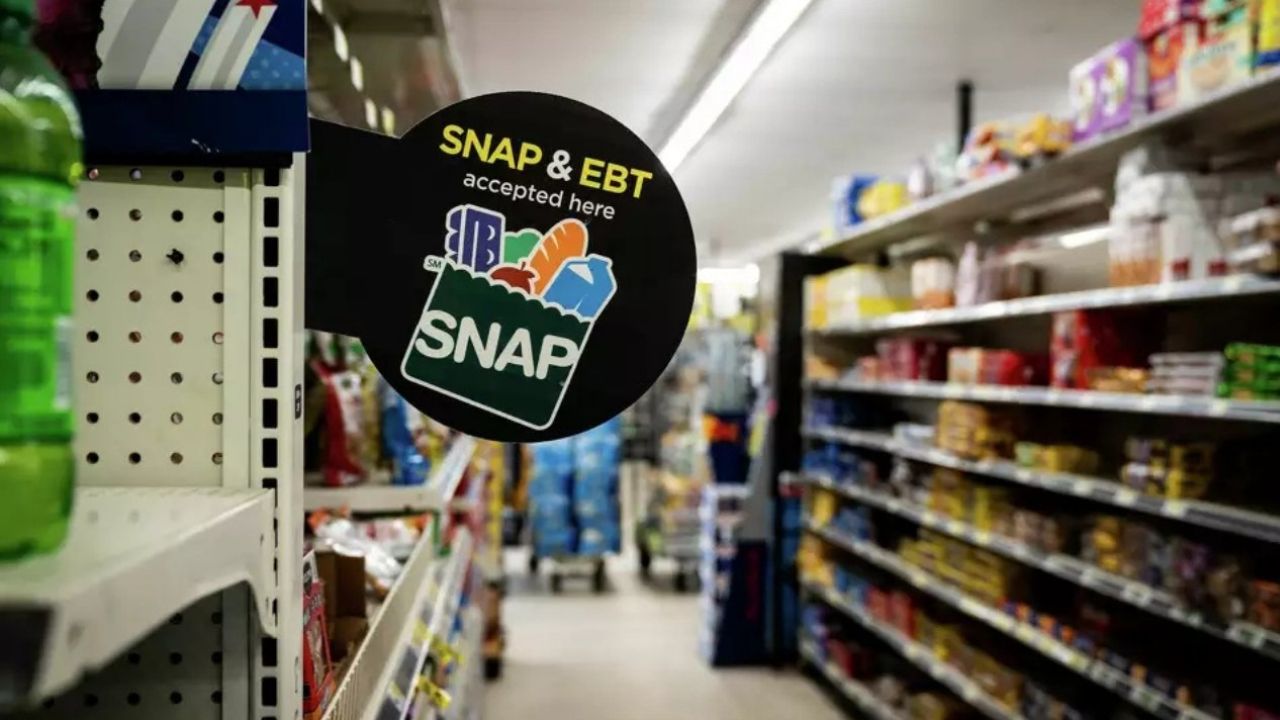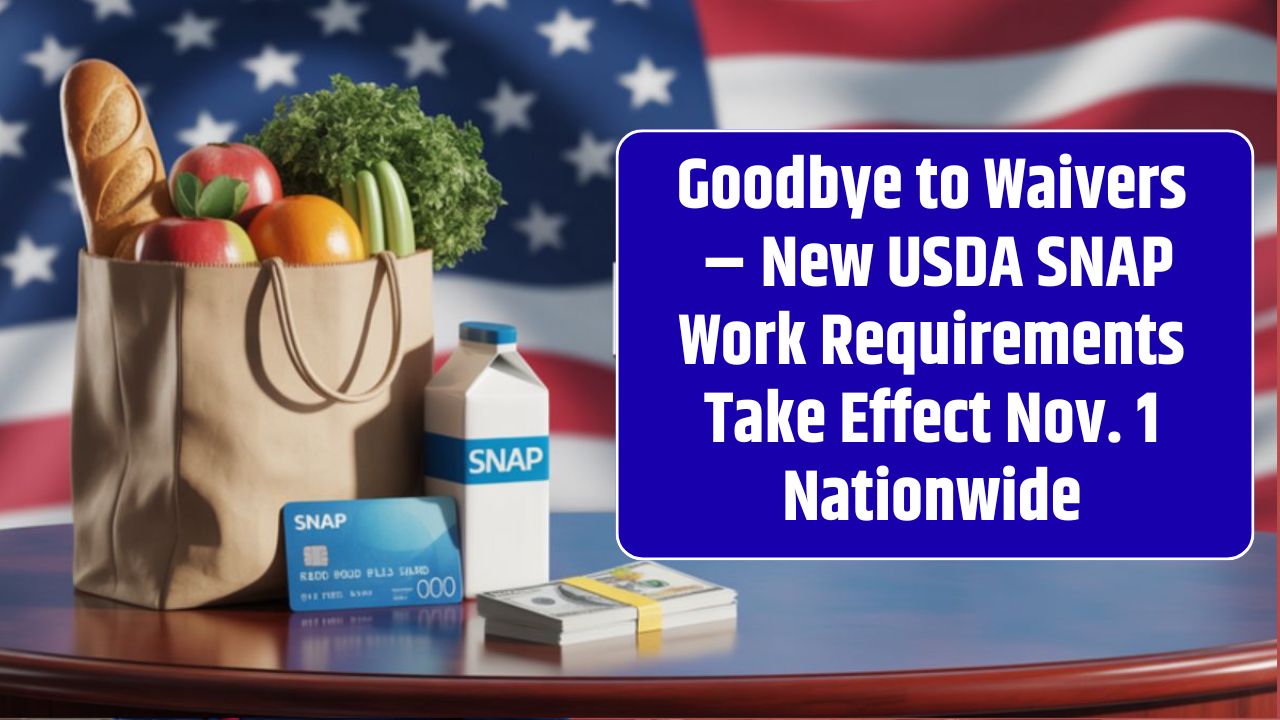When the calendar flips to November 1, 2025, hundreds of thousands of Americans on food assistance will face a new reality. The U.S. Department of Agriculture’s Food and Nutrition Service (USDA-FNS) is ending its long grace period and beginning full enforcement of work requirements under the Supplemental Nutrition Assistance Program (SNAP).
This isn’t a new law. It’s the government deciding that the old one — specifically the rules for Able-Bodied Adults Without Dependents (ABAWDs) — will finally be applied, everywhere, with no exceptions left to hide behind.
The 80-Hour Rule: What’s Finally Changing
For years, the requirement has technically existed: if you’re an adult aged roughly 18–64, without kids, you must work, train, or volunteer at least 80 hours a month to keep receiving food aid beyond three months in a 36-month period. But in practice, states often had wide leeway. Waivers were common, data tracking was spotty, and the rule was loosely enforced — especially during the pandemic.
Now, that wiggle room is gone.
| Category | Old Rule | New Enforcement (Nov. 2025) |
|---|---|---|
| Monthly requirement | 80 hours/month (work or training) | Still 80 hours — but states must verify monthly compliance |
| Time limit | 3 months of benefits in 36 months without work/training | Fully enforced nationwide after transition |
| Waivers | Broad use in high-unemployment areas | Sharply reduced, stricter federal approval |
| Exemptions | States had wide discretion | Narrowed: verified disability, pregnancy, or caregiving of child under 14 |
| “Hold Harmless” QC period | States shielded from penalties for errors | Ends Nov 2025 — QC errors now count again |
In short, USDA is hitting reset. And this time, the rules have teeth.
Who’s In and Who’s Out
Let’s make this plain. If you’re between 18 and 64, have no dependent children, and aren’t pregnant or medically exempt, this rule applies to you.
You’re exempt only if:
- You’re pregnant
- You have a verified physical or mental condition that prevents work
- You care for a child under 14 (previously under 18)
- You’re temporarily excused for a “good cause” like illness, emergency, or transportation barriers
States still get a small cushion of “discretionary exemptions,” but that pool can’t exceed 12% of the ABAWD caseload — meaning most people will need to meet the work hours or lose benefits after three months.
Why November 1 Is the Big Date
According to the USDA-FNS official guidance, November 1, 2025 marks the end of the transition period that began earlier under the One Big Beautiful Bill Act (OBBBA). States were given most of 2025 to update eligibility systems, train staff, and modernize tracking. Come November, the training wheels come off.
From that date forward:
- Every state must document monthly 80-hour participation in real time
- Waivers will be granted only under narrow economic criteria
- The “hold harmless” protection for states expires, meaning quality control errors can now trigger penalties
- Federal reviews resume, starting December 2025
In short, the USDA is saying: you’ve had your setup period — now prove it works.
The Policy Divide: Tough Love or Bureaucratic Trap?
Supporters call the change overdue. “This isn’t about cutting benefits,” a senior FNS official told reporters. “It’s about aligning food aid with pathways to employment.” They argue that clear expectations motivate recipients to seek work and reduce long-term dependency on public aid.
Critics, however, see a different picture. “The risk is administrative — not motivational,” said Elaine Waters, a policy analyst at the Center on Budget and Policy Priorities (CBPP). “Most ABAWDs already work part time or in gig jobs. What trips them up isn’t laziness, it’s paperwork — missing a report, or a shift being canceled at the last minute.”
In rural counties, job training programs are limited. Transportation’s unreliable. Many work seasonal or irregular hours. Meeting an exact 80-hour target — and proving it monthly — may be easier said than done.
The Shutdown Cloud Hanging Over November
Adding to the tension: the federal government’s ongoing funding lapse. Several states, including Pennsylvania, Michigan, and Oregon, have warned that SNAP benefits could face temporary payment delays if Congress doesn’t pass new appropriations by early November.
The ABAWD enforcement isn’t directly tied to the funding, but it shares staff and systems. As one state SNAP director put it, “We’re trying to rebuild an airplane mid-flight — while Washington’s debating whether to fund the runway.”
The USDA insists it will prioritize continuity of payments, but also acknowledged that “funding constraints could cause localized delays” if the impasse stretches beyond mid-November.
What SNAP Recipients Should Do Now
For affected individuals, the message is clear: don’t wait for the notice letter. Act now.
To stay eligible:
- Work, train, or volunteer 80 hours a month.
This can include part-time jobs, approved workforce programs, or verified community service. - Keep documentation. Pay stubs, attendance logs, or signed volunteer sheets — save them all.
- Report changes promptly to your local SNAP office. Missing paperwork could trigger the three-month cutoff.
- Check if you qualify for an exemption. Pregnancy, verified disability, or caregiving responsibilities count.
- Contact your caseworker before your certification period ends to confirm your status.
If your benefits do stop due to time limits, you can requalify later by meeting the work requirement or obtaining a new exemption.
What States Must Get Right
This is where the real work begins for state agencies. By USDA’s own checklist, states must:
- Update eligibility systems to flag ABAWDs and track their 36-month clock
- Verify participation monthly — not quarterly or annually
- Apply exemptions consistently and document them clearly
- Issue proper notices with fair-hearing rights
- Limit waivers and justify them quarterly to FNS
Once the hold-harmless period ends, states that fail to meet federal standards risk higher Quality Control (QC) error rates, which can trigger fiscal penalties or corrective action plans.
Key Dates to Watch
| Date | Event |
|---|---|
| Oct 2025 | Final state implementation plans and system testing due |
| Nov 1, 2025 | Full enforcement of ABAWD 80-hour rule begins |
| Nov 2025 | Possible SNAP payment delays if funding lapse continues |
| Dec 2025 – Jan 2026 | First USDA Quality Control reviews resume |
The next few months will reveal whether USDA’s tougher stance can strike the balance between accountability and compassion — or if the country’s most vulnerable adults will bear the brunt of bureaucratic precision.
FAQs:
Does this rule affect families with children?
No. Only adults without dependents (ABAWDs) are subject to the 80-hour requirement.
Can part-time work count toward the 80 hours?
Yes, as long as you can verify your hours monthly through pay stubs or employer statements.
What if I lose my job or my hours drop below 80?
You can receive benefits for up to three months during a 36-month window before the time limit applies.













